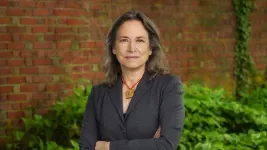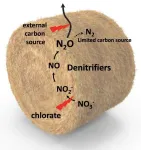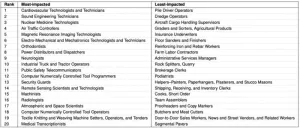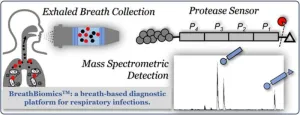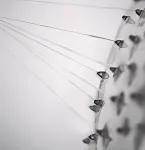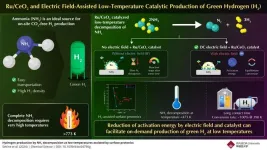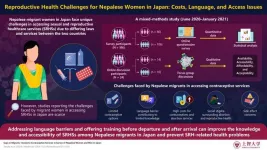(Press-News.org) Supercomputers are the largest and most powerful computers in the world and yet few people know what they do or why they should care. That’s why an English professor at Portland State is helping to demystify one of the world’s fastest and largest supercomputers with a grant from the National Science Foundation.
Sarah Read, an associate professor and director of PSU’s Technical and Professional Writing program, is teaming up with Clemson University’s Jordan Frith to give the public a better understanding of Aurora, which is expected to become one of the world’s most powerful public supercomputers.
Based at the Argonne Leadership Computing Facility (ALCF) near Chicago, Aurora became the second exascale supercomputer ever, meaning it’s capable of quintillion (that’s a billion billions) calculations a second. It’s built to tackle a wide range of scientific problems, including designing more efficient airplanes, investigating the mysteries of the cosmos, modeling the impacts of climate change and accelerating the discovery of new materials.
It’s not every day that two English professors are awarded a grant from the science-focused NSF — Read is among the few, if not the first, at PSU — but technical writing can help simplify complex topics like supercomputers. Read is building on research that she did in 2014-2016 when she was a guest faculty researcher at the ALCF. A previous generation supercomputer was in use and she talked to staff members about an annual report they prepared for their funder that turned out to be a key organizing principle for the operations of the supercomputing facility.
“It’s amazing to think of a boring report that everyone hates writing having such a profound influence on organizational structures and processes,” she said. “It changes how we think about technical writing, in a good way.”
This time around, Read and Frith’s research will answer questions like: How do you build a supercomputer? What does a supercomputer do? What do scientists and other staff do all day at the supercomputing center? What does the supercomputer do that affects me? Why does the U.S. need the fastest supercomputers?
The pair will conduct observational and interview research with individuals and processes related to Aurora, including Argonne employees working on Aurora and scientists running projects on Aurora. One of the pair’s focuses will be the user documentation that supports scientists in preparing their projects to run on the supercomputer.
“User documentation is particularly interesting when the technology in use is the first of its kind and is incredibly complex — that is, nobody really knows how it works and how it works is always changing,” Read said. “So by talking to users about their experiences using and also creating the documentation, we'll also get direct insight into the unknowns and uncertainties of using a supercomputer at the bleeding edge and how that edge shapes researchers' science.”
The first phase will focus on the everyday practices of supercomputing and how a big science project is used and maintained through the work of scientists, operations staff and technical documentation processes. The second phase will move into higher-level examinations of how the global competition for supercomputing leadership has been shaped by, and also shapes, the U.S.’s identity as a leader in scientific and technological advancement.
“One of our broader research questions looks at how exascale computing changes possibilities for science within the context of the dynamic geopolitical race for supercomputing power,” Read said.
The grant will provide opportunities for both undergraduate and graduate students at PSU and Clemson to work with the U.S. National Laboratory system and learn about the world of public supercomputing as both research assistants and interns. Just this summer, a technical writing master’s student landed a writing internship at ALCF that came out of Read’s long standing relationship with the facility.
END
PSU English professor to lift curtain on one of world’s most powerful supercomputers
2024-09-24
ELSE PRESS RELEASES FROM THIS DATE:
UTSA Center for Public Opinion Research releases survey of Bexar County voter opinions ahead of November 5 election
2024-09-24
SAN ANTONIO, TEXAS — A scientific survey of registered voters in Bexar County says that two city charter amendments have low support among voters and there is no early leader in the 2025 San Antonio mayoral race. Additionally, voters have mixed opinions about new San Antonio Spurs and San Antonio Missions facilities according to the Bexar County Registered Voter Poll, which was conducted from September 11 to 16, 2024 by the UTSA Center for Public Opinion Research (CPOR).
Established in Fall 2023, CPOR is a full-scale, academic public opinion research center that produces and facilitates basic and applied opinion research broadening shared understanding ...
Emily Carter wins prestigious Marsha I. Lester Award from American Chemical Society
2024-09-24
Emily Carter, senior strategic advisor and associate laboratory director for applied materials and sustainability sciences at the U.S. Department of Energy’s (DOE) Princeton Plasma Physics Laboratory (PPPL), has won the 2024 Marsha I. Lester Award for Exemplary Impact in Physical Chemistry.
Awarded each year by the American Chemical Society (ACS) at its annual fall meeting, the award recognizes an “exemplary impact in physical chemistry research.” Nominees for the award must be members of the ACS’s physical chemistry ...
New report from the University of Phoenix Career Institute® and the Center on Rural Innovation reveals keys to retaining rural America’s future generation
2024-09-24
Today, the University of Phoenix Career Institute® and the Center on Rural Innovation (CORI), a nonprofit seeking to advance economic prosperity in rural communities, released the G.R.O.W. ™ Generating Rural Opportunities in the Workforce™ report, providing a comprehensive look at the barriers Americans living in rural communities face in their day-to-day lives, and the impact these barriers have on career development and advancement opportunities.
The findings of this study underscore the ways in which recent workforce transformation ...
Greenhouse gas emissions from silage fed to livestock
2024-09-24
Changes in silage production could help cut greenhouse gas emissions from agriculture. Agriculture is the largest source of nitrous oxide (N2O) emissions in the United States. N2O is the third most impactful greenhouse gas, yet one potential source—silage—has not been thoroughly studied. Silage, which is moist, harvested plant material used to feed livestock during the winter, is preserved through fermentation. During this process, anaerobic bacteria produce lactic acid, which prevents the plants from spoiling. Jeongdae Im and colleagues suggest that silage could be a significant ...
The impact of AI on specific jobs
2024-09-24
Artificial intelligence (AI) may reshape many industries, but the impact of the nascent technology on various jobs remains unclear. Daniele Quercia and colleagues used machine learning to investigate itself, by identifying patents for AI technologies that may impact various occupational tasks. The model used a dataset of 17,879 task descriptions from O*NET, a US government-run occupations database, as well as 24,758 AI patents filed with the United States Patent and Trademark Office between 2015 and 2022 and measured semantic similarity between occupation task descriptions and patent descriptions. The analysis was not merely an exercise ...
Diagnosing respiratory infections with breath
2024-09-24
A proof-of-concept study promises the speedy diagnosis of lower respiratory tract infections through analysis of human breath. Lower respiratory tract infections, such as bronchitis, pneumonia, and bronchiolitis, are currently diagnosed by culturing bacteria from respiratory specimens, but the procedure is invasive, laborious, and time intensive. Molecular sequencing techniques cannot differentiate between clinical infection and mere colonization, in which bacteria are benignly present in the respiratory tract. Dapeng Chen and colleagues have designed a medical device that measures the protease activity ...
Well-being as student success
2024-09-24
In a Perspective, Holly C. White and colleagues argue that student well-being should be a goal of pedagogy, along with traditional metrics such as GPA and student retention. Despite evidence linking certain academic experiences with well-being outcomes, few students report having had such experiences. Well-being is defined as a sense of belonging, agency, purpose, identity, civic engagement, and financial well-being. The authors summarize data-backed teaching practices that support elements of student well-being, including supportive mentorships and experiential or authentic learning opportunities. Six exceptional initiatives are described, which can act as models ...
Spinning artificial spider silk into next-generation medical materials
2024-09-24
It’s almost time to dust off the Halloween decorations and adorn the house with all manner of spooky things, including the classic polyester spider webs. Scientists reporting in ACS Nano have made their own version of fake spider silk, but this one consists of proteins and heals wounds instead of haunting hallways. The artificial silk is strong enough to be woven into bandages that helped treat joint injuries and skin lesions in mice.
Spider silk is one of the strongest materials on Earth, technically stronger than steel for a material of ...
Low-temperature conversion of ammonia to hydrogen via electric field-aided surface protonics
2024-09-24
Hydrogen gas, owing to its high energy density and carbon-free nature, is gaining much attention as the energy source for a green and sustainable future. Despite being the most abundant element in the universe, hydrogen is mostly found in a bound state as chemical compounds such as ammonia, metal hydrides, and other hydrogenated compounds.
Among all the hydrogen carriers, ammonia stands out as a promising candidate owing to its wide availability, high hydrogen content with hydrogen making up 17.6% of its mass, and ease of liquefaction as well as transportation. A major drawback that hinders its exploitation as an ...
Challenges in availing reproductive health services experienced by migrant Nepalese men and women in Japan
2024-09-24
Despite a substantial Nepalese community in Japan many Nepalese women face significant challenges in accessing essential sexual and reproductive health services (SRHSs) due to language barriers and differences in healthcare laws and services between Nepal and Japan. In Nepal, women have free access to a wide range of contraceptive and abortion services, while Japan places more restrictions on certain contraceptives and does not provide free abortion services. These limited options make women more reliant on their male partner to use contraceptives for birth control. These challenges in accessing contraceptives, especially female-oriented contraceptives, lead them to acquire contraceptives ...

